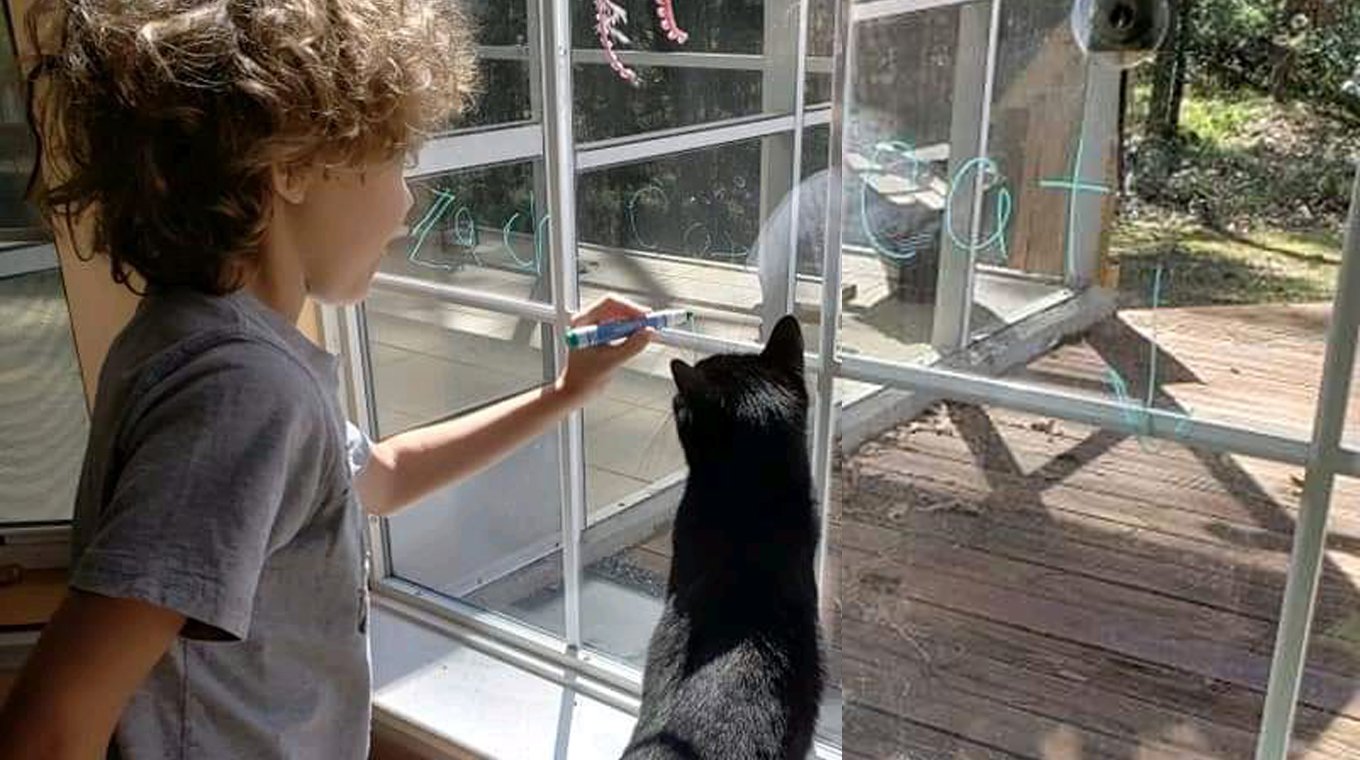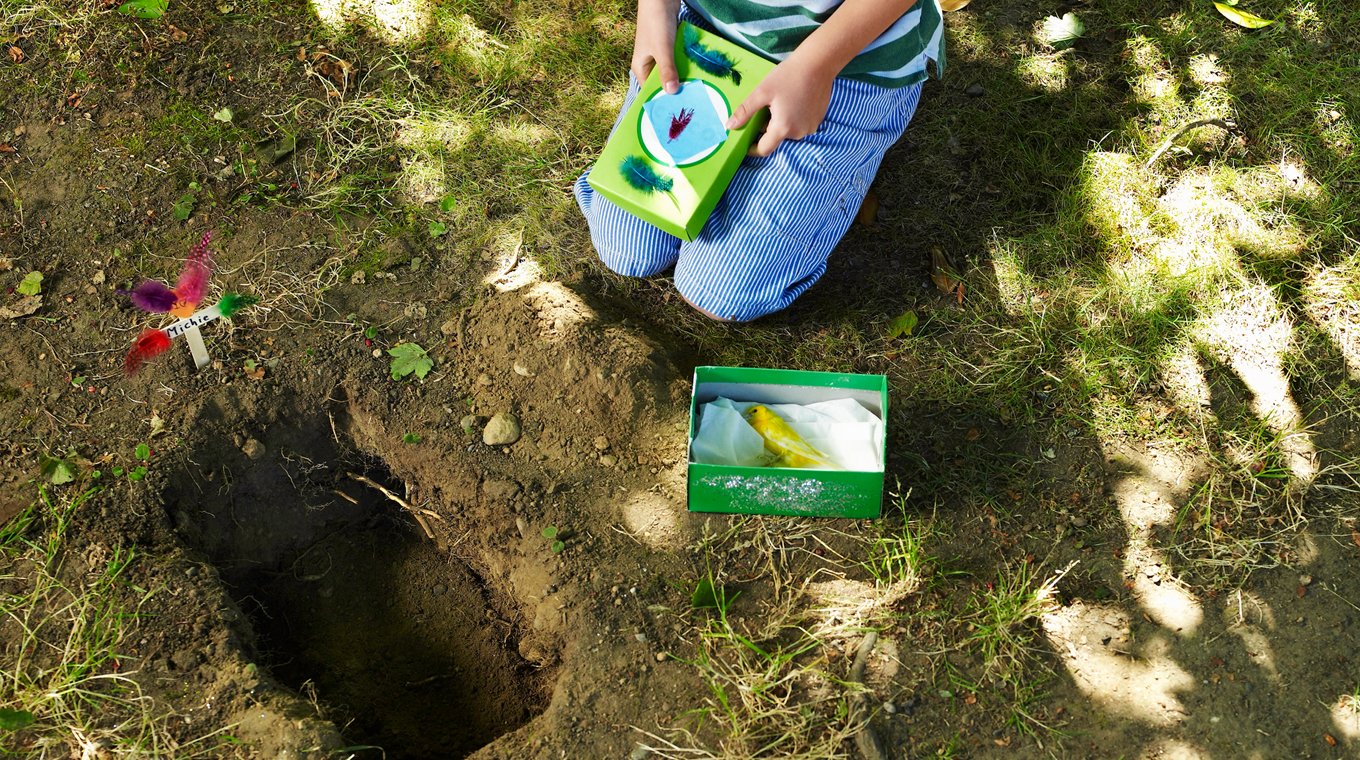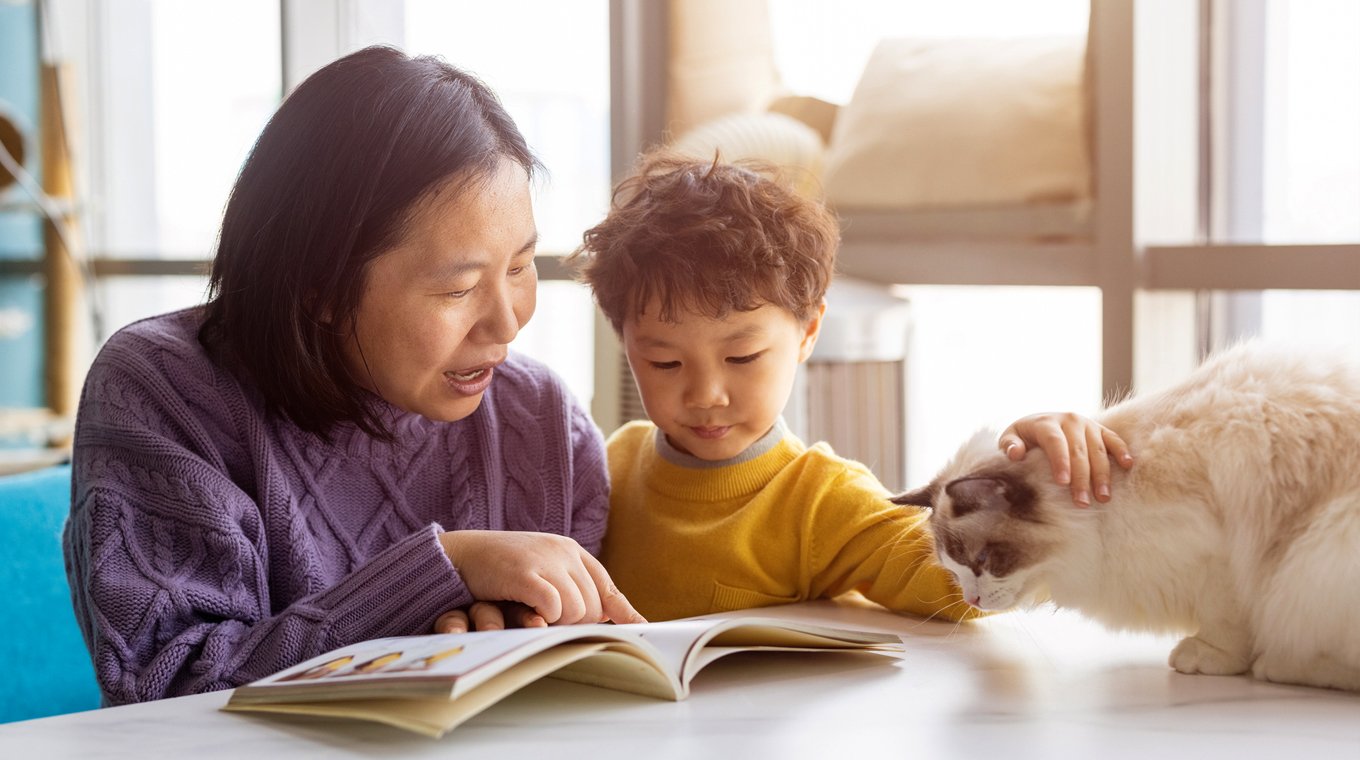In this article
Losing a beloved pet can upset the whole family. Whether your pet has an illness and is expected to die, has already died as a result of an accident or disease, or needs to be rehomed, it's never easy to say goodbye. For young children, losing a pet might trigger a range of troubling thoughts and disquieting emotions. Preparing kids to say goodbye to the family pet allows them a way to ask questions, express their emotions, and accept comfort and support from family members, teachers, and friends.
How to prepare for loss and explain death to kids

If your pet is ill and you have arranged for veterinary euthanasia, or you have decided to rehome your pet, it's important to explain to your child the reasons for your decision.
In August our cat, Lucky, was diagnosed with congestive heart failure, which upon diagnosis comes with a 6 to 12-month life expectancy. I explained to my 11-year-old that the next year or so will almost be similar to what we experienced when a family member entered hospice care last year. I told him that Lucky won't be with us for much longer, despite all of the medications he was helping me administer.
This explanation may work well for a tween, but if you have younger children, you'll want to be a bit more in-depth in your explanation. You may have to have multiple conversations. Use age-appropriate language, and answer your child's questions sensitively but honestly. Here are a few ways to explain death to kids; what to say and what not to say about loss.
- Make sure they understand that death is permanent, cartoons may skew their perception of death.
- Be direct and use terms like "dead" or "died" rather than euphemisms like "passed away" or "put to sleep."
- If your pet will undergo euthanasia, explain that the process is not painful.
- Make sure your child knows that they’re free to express grief in whichever way they want. It’s ok to cry and it’s also ok not to cry.
"Depending upon their age and maturity level, it may take weeks or months for them to accept that their dog is never coming back," California State University research psychologist Pamela Regan, Ph.D., told the American Kennel Club. "Don’t be afraid to have the conversation. We think children don’t understand, as they may repeat the same questions over and over, but they’re only trying to process the information," Regan explained. "They’re grappling with a new concept, so patience goes a long way."
Once your child understands your reasons for deciding on euthanasia or your pet has died, you can then encourage them to say goodbye. With young children, actions may speak louder than words; if your child is unsure about how to say goodbye, offer suggestions such as giving your pet one final cuddle before the procedure or taking one last photograph of the two of them together.
Teaching about loss: Help your child process their grief

A simply structured burial ceremony for your pet can help your child begin to process their grief and officially say goodbye.
"When my dog died, each one of the kids wrote Toby a letter and signed a message on the inside of the coffin," mom of four Sara Cwiertniewicz told Mom.com. "Yes, we built him a coffin and my husband grilled two cheeseburgers to bury with him. I painted the top of his coffin and then we had a funeral for him. The kids picked flowers in the field and placed them on top before we finished burying him."
Saying goodbye to a beloved pet is only the start of the grieving process. It's important to support kids as they begin to develop an awareness of concepts like aging, illness, and death. After the burial ceremony, your child might begin to ponder death and the meaning of life and start asking difficult questions.
Allowing children to grieve their loss in their own way is important. For many children, the loss of a pet is their first experience of death, and they often need time to process the event. Parents can help by allowing kids time to talk about their feelings or to work through their emotions. Have patience and know that in time, their grief and confusion will subside. Some grief coping strategies for kids include:
- Journaling or drawing their thoughts and feelings
- Getting fresh air, exercising and meditating
- Talking about their beloved pet
- Letting them keep a momento; a collar or favorite toy
- Creating a photo album of fun times with the pet
Books that help children say goodbye to a pet

Using children’s literature to broach challenging subjects can be helpful when you have difficulty finding the right words to comfort your child. Even if you’re able to effectively help your child cope with loss, incorporating additional resources can help your child feel less alone in their grief.
The Goodbye Book is told from the perspective of a pet fish whose fishbowl companion dies. Geared for preschoolers through grade 2, this picture book helps kids sort out unfamiliar emotions.
Badger’s Parting Gifts chronicles the woodland creatures who, upon the death of their wise friend, badger, come together to remember their trusted friend.
The Memory Box: A Book About Grief is told through the lens of a child who has lost a loved one. It encourages families to keep a box of mementos to remember their person and offers instructions on how to create one.
When a beloved pet dies, be sure to help your child take time to grieve properly rather than trying to fill that empty space with a brand-new pet. The healing required to move through the stages of grief is an important developmental step for children and should not be rushed.




